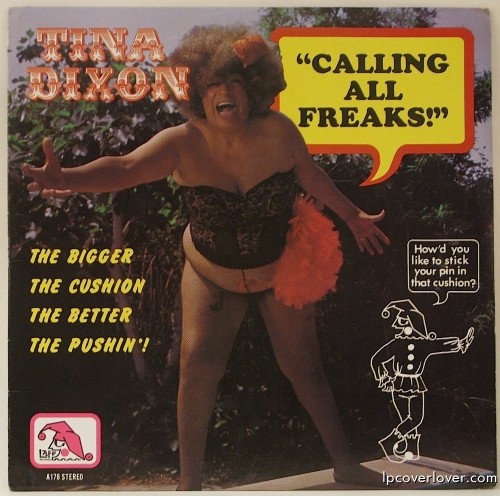Harmon and Scott dive into the history of Party Records; particularly Laff Records, a small independent comedy label known for XXX humor and helped launch the careers of Richard Pryor, Redd Foxx, LaWanda Page, and Skillet & Leroy.
Here's the best description we found for party records:
“Party records were albums that people would play at night after the kids went to bed, records you weren’t supposed to have. They weren’t on the shelves at record stores. You would have to ask for them, then they would reach under the counter and put them in a paper bag. It was almost like you were doing a drug deal!”
Though sexually-themed records with blue material have been around since the 1920s. Originally recorded on 78 rpm records - in old-timey days, party records were considered obscene by the censors of the 1940s and was illegal to produced, buy, sell, or possess -and had to be sold under the counter. Take the 1940's-era classic: The Urinal.
Party records became a phenomenon shortly after Los Angeles doo-wop label Dooto began producing records by then stand-up comedian Redd Foxx in 1955. Foxx's record, Laff of the Party, sold 250,000 units, which solidified the medium. Between 1956 and 1958, Foxx released an uncanny 14 comedy albums.
Laff Records was the label that really cemented the party record genre in the 60s. Comedians recorded on this blue comedy label included: Richard Pryor, Redd Foxx, Lawanda Page – along with Pipe Layin Dan, Tina Dixon, Skillet & Leroy, and Richard & Willie (a ventriloquist who was described as "Pryor with a dummy"). George Carlin recorded his album, Killer Carlin, on Laff Records.
Party records helped to integrate the stand-up comedy scene. The label worked with black comics who were touring through the chitlin’ circuit. These comedians were ignored by larger record labels. Party records provided that these comedians were wildly popular.- that might otherwise slip through the cracks at a major label.
Listening to a record produced by Laff felt like the the comic told the label, “I’m having some friends over tonight” and they replied, “Great, just tell jokes for 30 minutes and we’ll bring the one microphone we own!” Albums recorded in nightclubs were accented with the sound of clinking glasses in the background. Laff’s home club was in LA called the Parisian Room.
The album covers, shot mostly by Bud Fraker and Dominic Belmonte, often weren’t even visible. Like old school pornography, the records were sometimes sold wrapped in brown paper and the words: “For Adults Only.” Often, the covers had photos of topless women with the nipples covered with stickers which you could take off.
Meanwhile, the back cover had liner notes written in a bizarre, black beatnik language; which were often written by Shelby Meadows Ashford, who was originally the record label's bookkeeper:
“A parade of clowns and jesters…so, like it or lump it, hate or hump it…your lights are gonna be blinking bright over this risqué disc…Blackfolk taught Whitefolk how to dance and then they taught Whitefolk to LAFF…spend another XXX filled evening with another XXX filled album.”
One of the most underrated things about Laff Records was its openness to female comics. One of the best acts on the label was the rawest chick this side of the Mississippi, LaWanda Page. Born: Alberta Peal, Page was a friend of Redd Foxx since they were preteens in St. Louis.
in 1971, Richard Pryor recorded his 2nd album, Craps, on Laff Records. Recorded at the Redd Foxx's club on La Cienega Boulevard in LA, the album was one of the first hints of the foul-mouthed genius within. Laff Record's producer, David Drozen, went through hours of material and cut together a storming 31 tracks for the album, 16 of which were less than a minute long.
Laff Records comedians have been sampled through the year; including: DJ Quik (LaWanda Page/“Tear It Off”), N.W.A. (Skillet and Leroy/“She Swallowed It”) Madlib (Auntie Tina Dixon/“Interlude 7”), and the Beastie Boys, who not only sampled Richard Pryor but also Mantan Moreland's "That Ain't My Finger."




